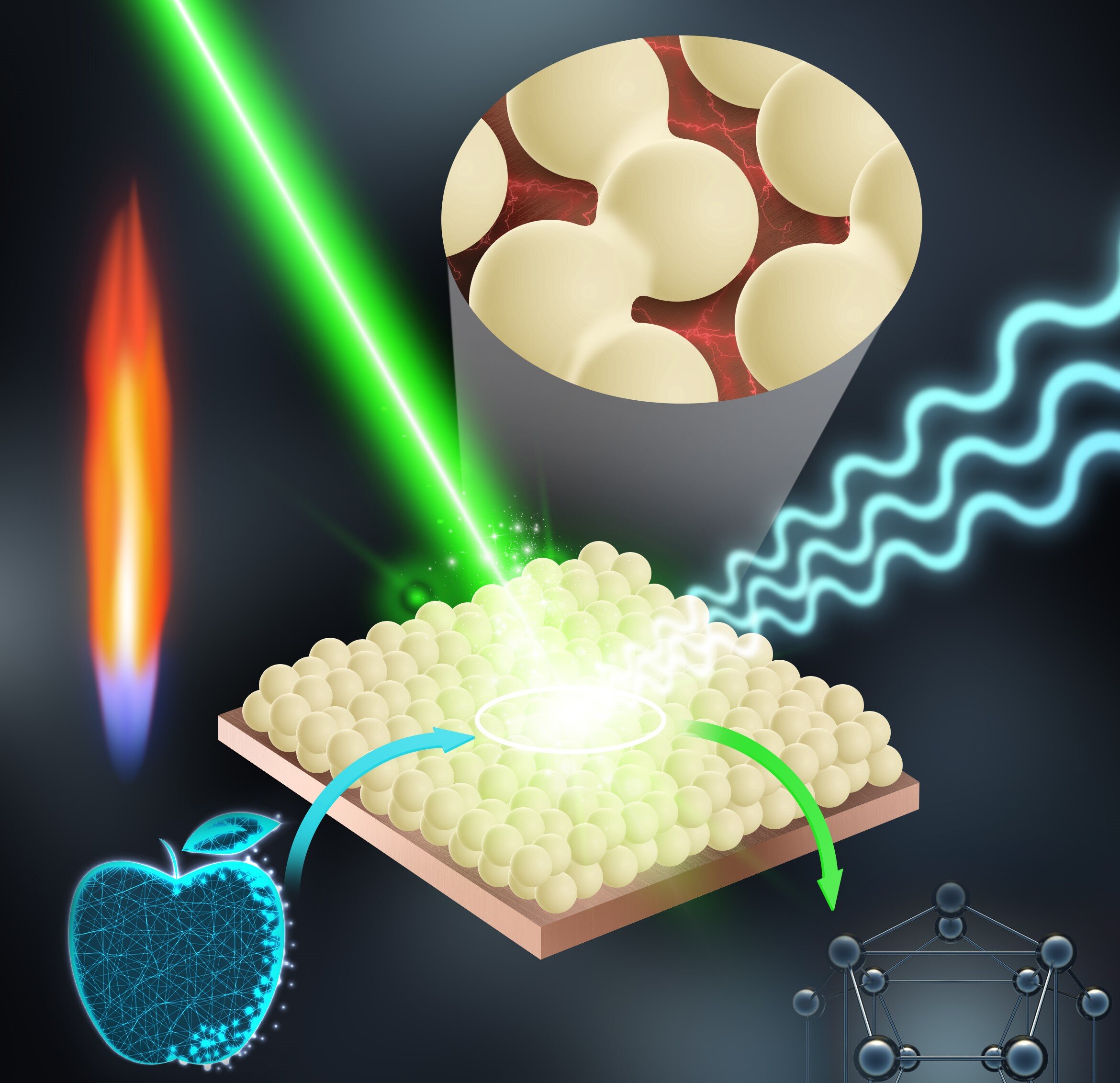博文
纳米传感器能在几分钟内检测到水果上的农药
||
纳米传感器能在几分钟内检测到水果上的农药
诸平



据瑞典卡罗琳斯卡学院(Karolinska Institutet)2022年6月7日提供的消息,卡罗林斯卡学院的研究人员开发了一种微型传感器,可以在几分钟内检测出水果上的农药(Nano-sensor detects pesticides on fruit in minutes)。这项技术于2022年6月7日已经在《先进科学》(Advanced Science)杂志网站发表——Haipeng Li, Padryk Merkl, Jens Sommertune, Thomas Thersleff, Georgios A. Sotiriou. SERS Hotspot Engineering by Aerosol Self-Assembly of Plasmonic Ag Nanoaggregates with Tunable Interparticle Distance. Advanced Science, First published: 07 June 2022. DOI: 10.1002/advs.202201133. https://doi.org/10.1002/advs.202201133
该技术在此文中被描述为概念验证,它使用火焰喷射银制成的纳米颗粒来增强化学物质的信号。虽然还处于早期阶段,但研究人员希望这些纳米传感器可以帮助在食用前发现食物中的农药。
卡罗琳斯卡学院微生物学、肿瘤和细胞生物学系的首席研究员、该研究论文的通讯作者乔治斯·索特里奥(Georgios Sotiriou)说:“报告显示,在欧盟销售的所有水果中,多达一半含有大量与人类健康问题有关的农药残留。然而,由于传感器的高成本和繁琐的制造,目前在消费前检测单一产品上的农药的技术在实践中受到限制。为了克服这个问题,我们开发了廉价且可再生的纳米传感器,可以用于监测水果农药(fruit pesticides)的痕迹,例如在商店。”
新的纳米传感器采用了20世纪70年代的一项发现,即表面增强拉曼散射(surface-enhanced Raman scattering简称SERS),这是一种强大的传感技术,可以将金属表面生物分子的诊断信号提高100万倍以上。该技术已被用于多个研究领域,包括化学和环境分析,以及检测各种疾病的生物标志物。然而,高昂的生产成本和有限的批次重现性(batch-to-batch reproducibility)至今阻碍了在食品安全诊断中的广泛应用。
火焰喷涂技术(Flame spray technology)
在目前的研究中,研究人员通过火焰喷涂技术创造了一种SERS纳米传感器。火焰喷涂技术是一种成熟且经济的技术,用于沉积金属涂层,将小滴的银纳米颗粒传输到玻璃表面。
乔治斯·索特里奥实验室的博士后研究员、该研究的第一作者李海鹏(Haipeng Li音译)说:“火焰喷涂可以用于在大范围内快速产生均匀的SERS薄膜,消除了可扩展性(scalability)的一个关键障碍。”
然后,研究人员微调了单个银纳米颗粒之间的距离,以提高它们的灵敏度。为了测试他们的物质检测能力,他们在传感器上涂了一层薄薄的示踪染料,并使用光谱仪来揭示他们的分子指纹。研究人员表示,传感器可靠且统一地检测到分子信号,在2.5个月后再次测试时,它们的性能保持不变,这凸显了它们的货架寿命潜力和大规模生产的可行性。
在苹果上检出杀虫剂(Detected pesticides on apples)
为了测试此传感器的实际应用,研究人员对它们进行了校准,以检测低浓度的对硫磷-乙基(parathion-ethyl),这是一种有毒的农业杀虫剂,在大多数国家被禁止或限制使用。将少量对硫磷-乙基放在苹果的一部分上。随后,用棉签浸泡在溶解农药分子的溶液中收集农药残留。将溶液滴在传感器上,传感器确认了农药(pesticides)的存在。
李海鹏说:“我们的传感器可以在5分钟内检测到苹果表面的农药残留,而不会破坏苹果。虽然它们需要在更大规模的研究中得到验证,但我们提供了一个概念验证的实际应用,在消费前进行大规模的食品安全测试。”
接下来,研究人员想要探索纳米传感器是否可以应用于其他领域,比如在资源有限的环境中发现特定疾病的生物标志物。
上述介绍,仅供参考。欲了解更多信息,敬请注意浏览原文或者相关报道。
极其敏感的纳米传感器可以检测到微量的分子(Extremely sensitive nano-sensors can detect trace amounts of molecules)
Surface-enhanced Raman scattering (SERS) is a powerful sensing technique. However, the employment of SERS sensors in practical applications is hindered by high fabrication costs from processes with limited scalability, poor batch-to-batch reproducibility, substrate stability, and uniformity. Here, highly scalable and reproducible flame aerosol technology is employed to rapidly self-assemble uniform SERS sensing films. Plasmonic Ag nanoparticles are deposited on substrates as nanoaggregates with fine control of their interparticle distance. The interparticle distance is tuned by adding a dielectric spacer during nanoparticle synthesis that separates the individual Ag nanoparticles within each nanoaggregate. The dielectric spacer thickness dictates the plasmonic coupling extinction of the deposited nanoaggregates and finely tunes the Raman hotspots. By systematically studying the optical and morphological properties of the developed SERS surfaces, structure–performance relationships are established and the optimal hot-spots occur for interparticle distance of 1 to 1.5 nm among the individual Ag nanoparticles, as also validated by computational modeling, are identified for the highest signal enhancement of a molecular Raman reporter. Finally, the superior stability and batch-to-batch reproducibility of the developed SERS sensors are demonstrated and their potential with a proof-of-concept practical application in food-safety diagnostics for pesticide detection on fruit surfaces is explored.
https://m.sciencenet.cn/blog-212210-1342114.html
上一篇:科学家发现新的化学反应
下一篇:室温下的液态铂:工业化学可持续革命的“酷”催化剂